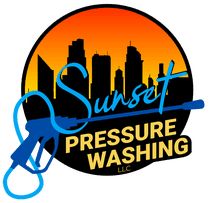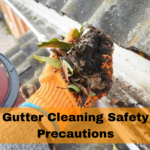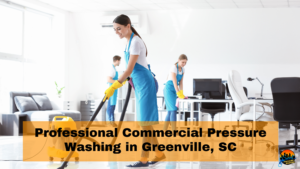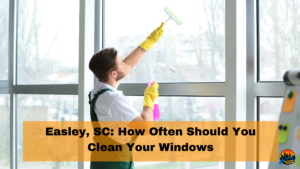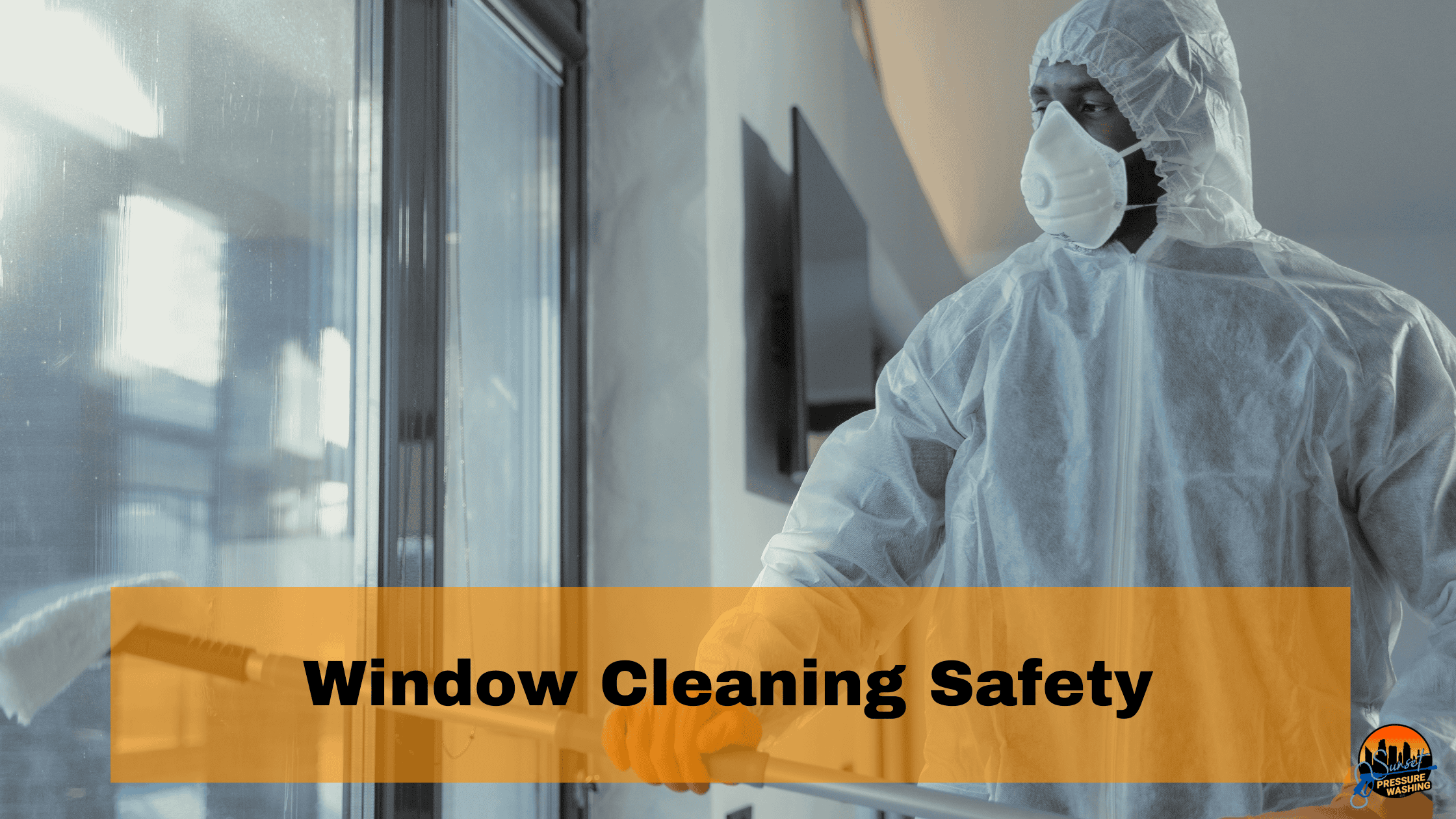
Window Cleaning Safety
Window cleaning, while necessary for both aesthetic and practical reasons, involves a variety of risks, especially when working at heights or with specialized equipment. Ensuring safety during window cleaning operations is paramount to prevent accidents and injuries. This comprehensive guide will walk you through essential safety tips and best practices to keep you and your team safe. We will also introduce a trusted service for those looking to outsource their window cleaning needs.
Understanding the Risks
Window cleaning may seem like a straightforward task, but it involves several inherent risks that can pose serious hazards to those performing the job. Awareness and understanding of these risks are the first steps toward preventing accidents and ensuring the safety of window cleaners. Here are the primary dangers associated with window cleaning:
Falls from Heights
One of the most significant risks in window cleaning is the potential for falls from heights. This can occur when workers use ladders, scaffolds, or are required to lean out of windows to reach difficult areas. Falls can result in severe injuries or even fatalities, making it crucial to implement strict safety measures and use appropriate fall protection equipment.
Slips and Trips
Window cleaning often involves water and cleaning solutions, which can make surfaces slippery. Slips and trips can happen on wet floors, ladders, or even when climbing scaffolding. Such accidents can lead to injuries from falls, including bruises, fractures, and concussions.
Cuts from Broken Glass
The nature of the job means that window cleaners often handle glass, and there is a risk of encountering broken or cracked panes. Handling glass without proper protective gear can lead to cuts or severe lacerations, which are not only painful but can also become infected.
Strain from Repetitive Motion or Improper Handling of Equipment
Window cleaning requires repetitive motions such as reaching, bending, and wiping, which can strain muscles and joints. Using heavy or improperly balanced equipment can exacerbate this risk, leading to muscle strains, ligament sprains, and other musculoskeletal injuries.
Exposure to Chemicals
Many cleaning solutions contain chemicals that can be harmful if inhaled or if they come into contact with the skin. Prolonged exposure to certain chemicals without proper protective equipment can lead to respiratory issues, skin irritation, or even chemical burns.
Electrical Hazards
When using water-fed poles and other equipment, there’s a risk of accidental contact with electrical wires or installations. This can lead to electrical shocks or electrocution, especially if the equipment is metallic or not adequately insulated.
Proper Training
Proper training is crucial in the window cleaning industry to ensure that all personnel are equipped with the knowledge and skills needed to perform their tasks safely and efficiently. Investing in thorough training programs not only minimizes the risk of accidents and injuries but also enhances the quality of work and boosts employee confidence. Here’s what a comprehensive training program for window cleaners should include:
Safety Training
Safety should be the cornerstone of any training program for window cleaning. This includes:
- Fall Protection: Trainees should learn how to correctly use personal protective equipment such as harnesses, safety lines, and anchors, especially when working at heights.
- Handling Equipment Safely: Proper techniques for handling and maintaining equipment such as ladders, scaffolds, and water-fed poles should be taught to prevent mishandling, which can lead to accidents.
- Chemical Safety: Workers must be trained on how to safely handle cleaning chemicals, including the proper use of personal protective equipment and first aid measures in case of exposure.
Technical Skills
Window cleaning involves more than just wiping down glass surfaces. Effective training should cover:
- Proper Cleaning Techniques: Instruction on the best practices for streak-free cleaning, including the use of squeegees, cloths, and brushes.
- Understanding Window Types: Different types of windows, such as tinted, tempered, or treated glass, may require specific cleaning methods and products to avoid damage.
- Efficient Use of Tools: Training should include how to operate and maintain various cleaning tools and machinery, like water-fed pole systems and high-pressure washers.
Ergonomics
Considering the physical nature of window cleaning, it is important to educate workers on ergonomics to prevent injuries related to muscle strain and repetitive movements:
- Proper Posture: Techniques to maintain correct posture while cleaning to avoid back and neck strain.
- Efficient Movement: Strategies to minimize energy expenditure and reduce the risk of injury during repetitive tasks.
- Regular Breaks: Encouraging regular breaks and stretches to keep muscles relaxed and blood circulating properly.
Emergency Response
Knowing what to do in an emergency is critical:
- First Aid Training: Basic first aid training, including CPR, can be vital in the event of an accident until professional medical help arrives.
- Rescue Procedures: Techniques for rescuing a colleague who may be injured on a scaffold or stuck at height.
- Evacuation Protocols: Understanding the procedures for quickly and safely evacuating the site in case of an emergency, such as a fire or severe weather.
Legal and Compliance Awareness
Window cleaners should also be aware of the legal aspects of their work:
- Understanding OSHA Regulations and Local Laws: Knowledge of occupational safety and health regulations that apply to window cleaning operations.
- Compliance with Industry Standards: Awareness of any certifications or industry standards that need to be adhered to during window cleaning operations.
Choosing the Right Equipment
The selection of the right equipment is vital in window cleaning, not just for efficiency and effectiveness, but crucially for safety. Using appropriate and well-maintained tools can significantly reduce the risk of accidents and injuries. Here’s a guide to choosing the best equipment for window cleaning tasks:
Ladders and Scaffolds
When selecting ladders and scaffolds, consider the following:
- Type and Size: Choose ladders and scaffolds that are appropriate for the height and type of job. For instance, extension ladders are suitable for higher windows, while step ladders might be better for lower applications.
- Material: Ladders made of non-conductive materials like fiberglass are safer around electrical hazards than those made from aluminum.
- Stability Features: Look for ladders with stabilizers or non-slip feet to enhance safety when climbing. Scaffolds should have sturdy, lockable wheels and guardrails.
Safety Harnesses
For any work at height, safety harnesses are crucial:
- Fit and Comfort: Ensure that harnesses fit properly and comfortably, allowing free movement without compromising safety.
- Certification: Only use harnesses that meet industry safety standards, such as those set by OSHA or ANSI.
- Attachment Points: Choose harnesses with adequate attachment points for better versatility in various working conditions.
Water-Fed Poles
Water-fed poles are excellent for cleaning high windows safely from the ground:
- Reach and Weight: Select poles that extend to the required heights but are still light enough to handle comfortably throughout the day.
- Material: Opt for poles made from lightweight and durable materials like carbon fiber, which offers a good balance of weight and strength.
- Brush Heads: Ensure the pole is equipped with the right brush head for different window types and dirt levels.
Cleaning Solutions and Chemicals
Using the correct cleaning chemicals is important not only for effectiveness but also to ensure they do not damage window surfaces or pose health risks:
- Compatibility: Check that the cleaning solutions are compatible with the window surfaces being cleaned, especially for specialized glass like tinted or coated windows.
- Eco-Friendly Options: Where possible, choose environmentally friendly cleaning agents that are less harmful to both the environment and the user.
- Dispensing Systems: Use dispensers that allow for precise mixing and application of cleaning solutions, reducing waste and exposure to concentrated chemicals.
Personal Protective Equipment (PPE)
Proper PPE is essential to protect against various physical risks:
- Gloves: Wear gloves that protect against cuts from glass and chemicals. Nitrile gloves can offer protection from chemical exposure, while cut-resistant gloves are beneficial for handling broken glass.
- Eye Protection: Safety goggles or glasses should be worn to prevent irritation or injury from splashing chemicals.
- Footwear: Choose shoes with non-slip soles to prevent slips and falls, especially when working on wet surfaces.
Maintenance and Storage
Proper maintenance and storage of equipment are as crucial as the initial selection:
- Regular Inspections: Regularly inspect all equipment for signs of wear or damage. Check ladders and scaffolds for stability, and replace any worn or broken parts immediately.
- Cleaning and Storage: Clean all tools and equipment after use and store them in a dry, secure place to prevent deterioration and ensure they are safe and ready for the next use.
Personal Protective Equipment (PPE)
Personal Protective Equipment (PPE) plays a vital role in ensuring the safety of window cleaners. Given the variety of hazards present in window cleaning, from chemical exposure to the risk of cuts and falls, selecting and using the right PPE is critical. Here’s a detailed guide to the essential PPE for window cleaning:
Gloves
Gloves protect against various risks:
- Chemical-Resistant Gloves: To prevent skin contact with harmful chemicals, window cleaners should wear gloves that resist chemical penetration. Nitrile gloves are commonly used for their durability and chemical resistance.
- Cut-Resistant Gloves: When handling glass or sharp tools, cut-resistant gloves made from materials like Kevlar or steel mesh provide added protection against cuts and lacerations.
Eye Protection
Eye protection is crucial to guard against chemical splashes and flying debris:
- Safety Glasses: These should have side shields to provide wrap-around protection against splashes and particles.
- Goggles: For tasks where there is a high risk of chemical exposure or significant amounts of debris, goggles offer a secure fit and comprehensive protection.
Footwear
Appropriate footwear is essential to prevent slips and falls, especially on wet surfaces:
- Non-Slip Shoes: Shoes with enhanced grip and slip-resistant soles are necessary to maintain stability on wet or slippery surfaces.
- Waterproof Features: For outdoor work or in conditions where water is prevalent, waterproof boots can keep feet dry and prevent discomfort or health issues like trench foot
Protective Clothing
Clothing should protect against weather elements, chemical splashes, and other physical hazards:
- Water-Resistant Clothing: Jackets and pants that are water-resistant help keep the cleaner dry and comfortable, improving performance and safety in wet conditions.
- Long Sleeves and Pants: Covering the skin reduces the risk of chemical burns and cuts, as well as sun exposure during outdoor work.
Head Protection
In areas where there is a risk of falling objects or when working at heights, head protection is important:
- Helmets: Safety helmets are essential when there is a risk of impact from falling objects, or when working at heights to protect against head injuries.
- Sun Protection: For outdoor work, hats with brims provide sun protection, helping to prevent heat stroke and sunburn.
Harnesses and Fall Protection
When working at significant heights, fall protection gear is essential:
- Safety Harnesses: Full-body harnesses should be worn whenever there is a risk of falling more than six feet. They should be securely attached to a lifeline or anchor point.
- Lanyards and Lifelines: These components of fall arrest systems must be durable and capable of stopping a fall quickly without causing injury.
Respiratory Protection
When using products that emit fumes, or in enclosed areas where air quality is compromised:
- Dust Masks: Simple masks can protect against non-toxic dust and pollen.
- Respirators: For more hazardous environments where toxic chemicals or significant dust is present, a proper respirator with the correct filter type for the specific hazard is necessary.
Regular Training and Maintenance
Beyond just wearing PPE, workers need regular training on the correct use and maintenance of their equipment:
- Proper Fit: Training should include how to properly fit each piece of PPE, as improper fitting can compromise protection.
- Maintenance and Inspection: Regular checks for wear and tear and proper cleaning practices extend the life and effectiveness of PPE.
Checking Weather Conditions
Weather conditions have a significant impact on the safety and effectiveness of window cleaning operations. Understanding and preparing for weather variations can help prevent accidents and ensure the well-being of workers. Here are key considerations and strategies for managing weather-related challenges in window cleaning:
Importance of Monitoring Weather
Regularly checking the weather forecast is crucial for planning safe window cleaning activities. Sudden changes in weather can affect working conditions, especially when cleaning exterior windows at heights. It’s important to be aware of any incoming adverse weather that could pose risks such as high winds, thunderstorms, or extreme temperatures.
Identifying Risky Weather Conditions
Certain weather conditions are particularly hazardous for window cleaning:
- High Winds: Can destabilize ladders and scaffolding, and make handling equipment difficult.
- Rain: Wet conditions increase the risk of slips and reduce visibility.
- Extreme Cold: Can lead to icy surfaces, making slips more likely and potentially freezing equipment.
- Heat Waves: Pose risks of heat exhaustion and dehydration.
Tools for Weather Tracking
Utilizing reliable weather tracking tools is essential for any window cleaning operation:
- Weather Apps: Mobile apps provide real-time updates and alerts for adverse conditions.
- Websites: Official weather websites offer detailed forecasts and safety advisories.
- Weather Stations: On-site weather stations can provide the most immediate and relevant data for large or ongoing projects.
Adjusting Schedules Based on Weather
Flexibility in scheduling is key to adapting to sudden weather changes. If adverse weather is forecast, it may be necessary to reschedule to a safer time. This flexibility not only ensures safety but also maintains the quality of cleaning, as certain conditions can hinder the effectiveness of cleaning solutions and techniques.
Safe Use of Chemicals
Before using any cleaning chemicals, it’s crucial to understand their properties and potential hazards. Reading material safety data sheets (MSDS) for each chemical is essential. These documents provide information on the composition, hazards, handling, and emergency control measures. Knowing whether a chemical is corrosive, flammable, or toxic helps in planning safe usage and storage.
Proper Handling and Storage
Safe handling of chemicals begins with using the correct containers and ensuring that they are clearly labeled. Chemicals should never be mixed unless explicitly directed by the manufacturer, as this can lead to dangerous reactions. Additionally, ensure that all chemicals are stored in a cool, dry place away from direct sunlight and are securely sealed to prevent leaks and fumes from escaping.
Personal Protective Equipment (PPE)
Wearing appropriate personal protective equipment is non-negotiable when working with hazardous chemicals. Depending on the chemicals used, this may include gloves, goggles, face shields, and respiratory protection. The type of PPE needed should be specified in the MSDS.
Ventilation
Proper ventilation is crucial when using chemicals, especially in enclosed spaces. Ensuring that fresh air is circulating can help disperse fumes and reduce the inhalation risks associated with volatile compounds. If natural ventilation is insufficient, mechanical systems such as fans or exhaust systems may be necessary.
Training and Emergency Procedures
All personnel should receive training on the safe use of chemicals, including how to handle spills and what to do in an emergency. This training should cover the use of emergency equipment such as eyewash stations and showers. Regular drills and refresher courses can help maintain high safety standards and ensure everyone knows how to act quickly and effectively in case of an incident.
Safe Disposal
Proper disposal of chemicals and contaminated materials is as important as safe handling. Follow local regulations and guidelines for disposing of hazardous waste. This often means contracting with certified disposal companies who can safely remove and dispose of chemical waste, thus minimizing environmental impact and potential harm to people.
Ergonomics and Technique
Ergonomics plays a critical role in window cleaning by helping to minimize the physical strain on cleaners. Understanding the body’s natural movements and limitations is key to preventing injuries. Ergonomic techniques involve using equipment and adopting cleaning methods that align with natural postures, reducing the risk of musculoskeletal disorders.
Choosing Ergonomic Equipment
Selecting the right equipment is essential for maintaining proper ergonomics. Tools like extension poles allow cleaners to reach high windows without overstretching or constantly holding their arms up, which can lead to shoulder and back strain. Ergonomically designed squeegees and scrapers with padded, non-slip grips also help reduce hand and wrist fatigue.
Correct Posture and Movement
Maintaining correct posture during window cleaning is crucial. Cleaners should be trained to keep their backs straight and avoid twisting at awkward angles when reaching across windows. When lifting or moving heavy equipment, using the legs rather than the back to lift can prevent strain. Regularly switching hands and alternating tasks can also help distribute the physical load evenly.
Technique Training
Proper technique not only ensures efficiency but also enhances safety. Training should include demonstrations on the correct use of tools and equipment. For example, techniques for efficient squeegee use—such as the angle of the blade and the pressure applied—can prevent repetitive strain injuries. Similarly, teaching cleaners how to properly maneuver ladders and scaffolds can prevent falls and injuries related to equipment misuse.
Importance of Breaks and Stretching
Regular breaks are vital to prevent overexertion. During breaks, window cleaners should be encouraged to stretch and move around, which helps relieve muscle tension and improve circulation. Implementing short, frequent breaks into the work schedule can significantly reduce the risk of fatigue-related errors and injuries.
Adjusting Work Practices for Individual Needs
Recognizing that each cleaner has unique physical limitations is important. Adjustments may need to be made based on individual health conditions or capabilities. This could mean assigning less physically demanding tasks to those with lower physical endurance or providing additional ergonomic aids to those who require them.
Regular Maintenance and Inspections
Regular maintenance and inspections of window cleaning equipment are essential for ensuring the safety and efficiency of operations. Well-maintained tools are less likely to fail and cause accidents, which protects both the window cleaners and the public. Additionally, routine maintenance often extends the life of the equipment, making it a cost-effective practice.
Daily Inspections
Before any window cleaning task, a daily inspection should be conducted. This includes checking ladders, scaffolds, and safety harnesses for any signs of wear or damage. Tools like squeegees, scrapers, and water-fed poles should be examined for integrity and functionality. Any equipment found to be faulty should be repaired or replaced immediately.
Scheduled Maintenance
Beyond daily checks, scheduling regular, comprehensive maintenance is crucial. This involves a deeper inspection and servicing of equipment. For example, all moving parts on ladders and scaffolds should be lubricated to ensure smooth operation. Water-fed pole systems and high-pressure washers should be checked for blockages or leaks and have their filters cleaned or replaced as needed.
Record Keeping
Maintaining a log of inspections, maintenance, and repairs is vital for tracking the condition of each piece of equipment. These records can help identify patterns or recurring issues that may not be immediately obvious. They also serve as a compliance tool to demonstrate adherence to safety standards and regulations.
Training for Maintenance
Window cleaners should be trained not only in the proper use of equipment but also in basic maintenance tasks. This training ensures that they understand how to care for the tools they use daily and can spot potential issues before they lead to failures. It also empowers them to take immediate action to mitigate risks.
Professional Servicing
While much of the maintenance can be handled in-house, some aspects may require professional servicing, especially for complex machinery such as motorized lifts or specialized cleaning systems. Regular professional check-ups ensure that equipment meets industry safety standards and is operating efficiently.
Impact of Environmental Factors
Finally, the maintenance schedule should consider environmental factors that can affect equipment. For example, tools used in coastal areas may be more prone to corrosion due to salt air and require more frequent inspections and care. Understanding these environmental impacts is crucial for tailoring maintenance practices accordingly.
Emergency Planning
Effective emergency planning is essential for ensuring the safety of window cleaners, especially when working at heights or in potentially hazardous environments. Establishing clear and concise emergency protocols provides a guideline for how to respond in various situations, helping to minimize injuries and potentially save lives. These protocols should include procedures for dealing with falls, medical emergencies, equipment failures, and environmental hazards such as severe weather.
Training and Drills
Regular training sessions and emergency drills are critical components of emergency planning. All employees should be trained on the specific actions to take in response to different types of emergencies. This training should be conducted regularly to ensure that all team members are familiar with the protocols and can react promptly and effectively. Drills should be conducted to simulate emergency scenarios, allowing workers to practice their responses in a controlled environment, which can help reduce panic and confusion in a real emergency.
Rescue Plans
Specific rescue plans must be in place, particularly for scenarios where workers might be stranded at height, such as on scaffolding or during the use of aerial lifts. These plans should outline the steps to safely rescue and lower a worker to the ground. It’s crucial to have appropriate rescue equipment readily available and ensure that multiple team members are trained in its use.
First Aid and Medical Assistance
Ensuring that first aid supplies are accessible at all job sites is another important aspect of emergency planning. Kits should be regularly checked and replenished to ensure that all items are in good condition and within their expiration dates. Training employees in basic first aid and CPR can make a significant difference in the outcome of medical emergencies. It’s also important to have clear procedures for contacting emergency medical services when necessary.
Communication Systems
A reliable communication system is vital for effective emergency response. Workers should have a way to communicate quickly with one another and with emergency services if needed. This could include mobile phones, walkie-talkies, or other communication devices, depending on the location and nature of the work.
Evacuation Routes and Meeting Points
Clear evacuation routes should be established and marked, especially for work in high-rise buildings or large complexes. Regularly reviewing these routes with employees ensures that everyone knows how to exit the building safely in case of an emergency. Designating specific meeting points helps in accounting for all employees after an evacuation.
Review and Update Emergency Plans
Emergency plans should not be static; they need to be reviewed and updated regularly to adapt to new safety standards, changes in personnel, or updates in equipment and techniques. Input from employees, who are often the first to recognize potential dangers or flaws in existing plans, can be invaluable in refining these plans.
Ensuring Safety in Window Cleaning
Ensuring safety in window cleaning is not just about compliance or avoiding accidents—it’s about creating a culture of safety that prioritizes the well-being of every team member and protects property. By understanding the risks, investing in proper training, selecting the right equipment, and adhering to legal standards, businesses can significantly reduce the likelihood of accidents and injuries. Regular maintenance and diligent emergency planning further bolster a safe working environment, allowing window cleaners to perform their duties efficiently and safely.
For those who recognize the complexity and potential hazards of maintaining window cleanliness, professional window cleaning services offer a reliable solution. Professionals are equipped with the necessary tools, training, and expertise to handle any window cleaning task safely and effectively, reducing the risk to individuals and property alike. Trust Sunset Pressure Wash and contact to take care of your window cleaning needs, letting you focus on what matters most to you.
